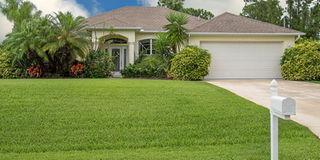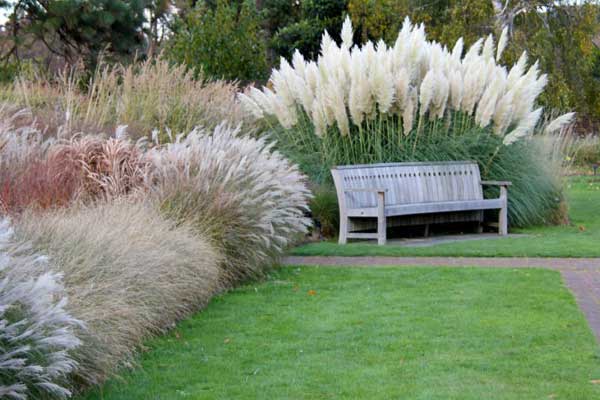Prime
Picking the best grass for your lawn

Economically speaking, a well-tended manicured lawn increases the value of one’s property. PHOTOs/net.
What you need to know:
Valued mostly for its ornamental benefits, grass has other benefits such as prevention of erosion and improving air quality.
There is something about grass that makes Margaret Kabiti’s heart sing with wonder. You see and hear it as she talks about the thousands of green individual plants that grow together into the lawns that rival the sky above.
“I love how it grows and fills up the spaces where other plants and flowers can’t,” the owner of Maggie’s Grass and Maggie’s Plants and Landscapers located in Ruiru shares. Passionate about grass, she explains that growing it is not child’s play.
“Because we’ve grown up around grass, people tend to think that grass grows easily. Well, grass is not “just grass”. It requires effort, knowledge and love,” Kabiti explains.
Valued mostly for its ornamental benefits, grass has other numerous benefits: grass-covered lawns around the home prevent erosion, improve air quality by emitting oxygen, trap dust and create a microclimate with reduced temperatures. Economically speaking, a well-tended manicured lawn increases the value of one’s property.
Black cotton soil retains water leading to root rot while sandy soil loses water drying out the roots. Ensure that the planting area is weed-free, adequately moisturised and levelled to remove bumps, she advises.
“Feed the grass adequately, and top-dress it when the time comes. This enhances fast growth, filling up the bare spots that lead to the proliferation of weeds. No open spots, no weeds.”
So, is grass always greener on the other side of your lawn? Kabiti shares with us the details on types of grasses, and tips on growing and maintaining healthy, good-looking green lawns.
Pemba
Also known as Buffalo grass, Pemba is a warm-season grass. You will know it by its light to dark green colour and its broad and flat leaf blades. It grows under direct or indirect sunlight, and is shade tolerant but only in warm regions. Dominant in nature, the grass grows and crowds out weeds once it holds together.
“Water-wise, it is low maintenance but its aggressive growth rates require it to be mowed frequently,” she notes adding, “Once planted, water daily for two to three weeks. It matures in three months into a consistent, thick ground cover.” Pemba green or variegated grasses will do well in black cotton soil mixed with manure.
Arabic
A cool-season grass, it is characterised by its deep green, small, fine-textured leaf blades and shiny look.
“It is the most beautiful carpet grass and one that appeals to your senses. It is delicate, soft to the touch, and soothing to look at,” the nature lover says.
Arabic brings luxury into your home, office or playgrounds. Maturing in three months, it can be planted under direct sunlight, full or partial shade. If well planted, it forms a dense mat resistant to weeds.
“However, it does not do well in high altitudes, dies under too much traffic, and is high-maintenance requiring regular watering. It is also not drought resistant. If it dries out or is infested by weeds or termites due to open gaps, you have to uproot and plant it afresh.”
Zimbabwe
This grass grows well under total shade. It can also be grown under direct sunlight. It’s known by its light green coloured, smooth and broad leaves that are slightly curled at the edges. An aggressive creeper, it will overpowers weeds and pests easily. Zimbabwe is a low-maintenance grass requiring little water.
“However, it must be watered during dry seasons to maintain its lushness, especially if under direct sunlight,” Kabiti says. The grass also flourishes in cold areas but will grow at a snail’s pace.
Kikuyu
A grass native to Kenya, it has broad, dark green leaves that appear folded. “With exceptional cold tolerance, it is ideal for cold areas, growing into an attractive dense covering. It is weed-resistant, shade tolerant and withstands traffic,” she says.
Whereas it can be grown in warm areas, it has medium heat and drought tolerance thus needs regular watering, mowing and feeding to ensure it bands together to survive the heat and weeds that easily infest it if spaces are left.
“Kikuyu grass matures in three months and is best if beauty is not what you are after. The grass has practical uses as it can be fed to cows and chicken,” she says.
Paspalum
Easily confused with Zimbabwe grass, this fast-growing grass has dark green, broad and coarse leaves with wide tips. A warm-season grass that matures in two months, Paspalum is suitable for recreational lawns and sports pitches since it has poor shade tolerance and grows best in full sun.
It is suitable for dry and hot areas with black cotton soil. With proper watering, Paspalum can grow into a nice carpet. Unfortunately, it is easily dominated by other grasses and weeds. To keep this in check, mow and feed it regularly.
Maadi River
“This low shade tolerant grass grows wildly, matures in three months and is easy to maintain,” shares Kabiti. It can be passed across as Arabic due to its fine texture.
To differentiate the two, study the leaves. Maadi River’s are large and dull green missing the glowing trait that lends Arabic its shiny character. Hardy, it annihilates weeds easily and grows well in dry, hot areas but poorly in cold regions.
Star grass
This is a highly tolerant grass. It can withstand drought and high traffic making it ideal for sports fields. It’s also low- maintenance. Though it dries up when it is hot, a little water sent its way quickly revives it.
“The key to beautiful lawns is in choosing the correct type of grass for your region. This coupled with healthy doses of water, sunshine and feeding requirements, combined in good, well-draining soil results in a remarkable lawn.”
Climate
Generally, there are warm-season grasses that do well in warmer climates and cool-season grasses for cold climates. According to Kabiti, the grass feels at home in red soil mixed with nature’s black gold – manure.




